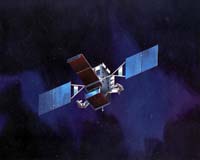| . |  |
. |
Air Force Space Command Public Affairs Peterson AFB CO (SPX) Sep 23, 2009 ICBMs have been, and continue to be, an essential element of the United States strategic global strike equation. In honor of the 50th ICBM Anniversary, Air Force Space Command public affairs, interviewed four space pioneers in efforts to portray their perspective when the ICBM program was young in years. The first element to question, what necessitated inter-continental ballistic missiles? Space pioneer and Peacekeeper ICBM program director, retired Lt. Gen. Aloysius Casey, said, "ICBMs were created in response to the threat of a large Soviet Union long range missile program." During the Cold War, the U.S. had a dominant strategic bomber force (B-36 and B-47 aircraft), the Soviets were working hard to establish a missile force capable of an enormous first strike before our bombers could arrive on target. Throughout the Cold War, ICBMs provided the U.S. with a credible deterrent force capable of striking long range targets. ICBMs had about a 35-minute strike rate making them ideal. "The time was right," said retired Brig. Gen. Elmer Brooks. "The US was engaged in a tense Cold War and an arms race with the USSR. Rocket, guidance and nuclear warhead technologies matured to the extent that combining them in an ICBM was feasible. ICBMs provided the capability to strike targets with a nuclear bomb virtually anywhere in the world within 35 minutes of launch with no known defenses." The world has changed since the Soviet Union collapsed, the Cold War ended, and a global war against terrorism began. Today, there are major security challenges posed by persons who possess the abilities to conduct both symmetric and asymmetric warfare around the globe. Are ICBM capabilities still useful today? Lt. Gen. Casey said, "The mission of nuclear deterrence will undoubtedly remain the ICBMs priority focus, but changing security environments dictate an assessment of the ICBMs potential value as a conventional global strike weapon." According to Brig. Gen. Brooks, "These powerful weapons served our nation well as deterrents. After fulfilling that role, they are now serving as launch vehicles missions for the Air Force. ICBMs are aged 50 years plus and continue to age with grace, How do you feel about the upcoming 50th Anniversary? Brig. Gen. Brooks said, "...extremely pleased to have contributed in these 50 years of historic achievements, it is well worth celebrating." Lt. Gen. Casey added, "Happy to see some of the past hard work recognized." One thing is certain, the world will continue to change and the Air Force ICBM force along with it. Share This Article With Planet Earth
Related Links - Military Space News at SpaceWar.com
 Missile Warning Satellite Begins Major Environmental Test Phase
Missile Warning Satellite Begins Major Environmental Test PhaseSunnyvale CA (SPX) Sep 21, 2009 Lockheed Martin has begun thermal vacuum testing of the first Space Based Infrared System (SBIRS) geosynchronous (GEO-1) satellite, a major program milestone that will validate spacecraft performance in a complete test-like-you-fly environment. The U.S. Air Force's SBIRS program is designed to provide early warning of missile launches, and simultaneously support other missions, including ... read more |
|
| The content herein, unless otherwise known to be public domain, are Copyright 1995-2009 - SpaceDaily. AFP and UPI Wire Stories are copyright Agence France-Presse and United Press International. ESA Portal Reports are copyright European Space Agency. All NASA sourced material is public domain. Additional copyrights may apply in whole or part to other bona fide parties. Advertising does not imply endorsement,agreement or approval of any opinions, statements or information provided by SpaceDaily on any Web page published or hosted by SpaceDaily. Privacy Statement |